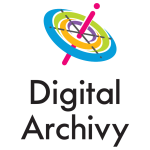MARAC Panel (1 of 3)

MARAC Panel on Digital Archivists and IT Professionals – David Kay, Spring 2017 (part 1 of 3):
Recently I participated in a Mid-Atlantic Region Archives Conference MARAC panel discussion n Newark. The topic was on similarities and differences between IT and digital archivists. I was honored to be on the panel with four professional digital archivists whom I respect deeply. The other panelists were very impressive. They also work in academic, medical, and public libraries. To contextualize my unique experience and knowledge with clients in private and not-for-profit sectors, it was important to discuss three types of archival collections because their unique qualities and distinct users determine the archival methodologies, policies, and deliverables.
Types of Institutional Archives
The two most common types of archives are personal papers (or historical manuscripts), and public archives (or governmental records). Archivists working in these two types of archival institutions constitute two-thirds of the Society of American Archivists’ membership. From my experience working in academic institutions and governmental agencies, I have identified similarities and differences in the needs, uses, and users of business archives compared with the other types.
In all scenarios, like Janus, the two-faced Roman God of Beginnings and Endings, archivists benefit from our own subjectivity and objectivity. By understanding archival theory and practice, digital archivists can build on lessons learned and shared in the past. Our familiarity with content and context is critical regardless of archives type.
Marac Panel – An overview of IT and Digital Archivists
Technological infrastructure and their ecosystem of network servers concerns all IT professionals. While computers, operating systems and software compatibility, they are aware of the risks and challenges they face. For example, many have faced problems with external portable drives for media storage. Depending on the type of archives, IT may enforce strict information security policies. Their expertise lies in familiarity with firewalls, email systems, servers, network access, and security protocols, as well as information governance. Some IT departments have automated system backups as part of their disaster planning and emergency preparedness programs. In many cases, though, IT professionals will say, “Yes, we archive everything. We do daily backups.” In other words, IT professionals are like digital archivists. They are also concerned with big issues such as access, control, and storage of information and data.
But while IT departments focus on similar objectives, digital archivists see technology as a system and an infrastructure, not simply as a tool. Digital archivists know that the work depends on people, process and technology. As archivists, we often help other select data and interpret information. From experience, we become experts in pattern recognition, data validation and verification, and in quality control. In addition, digital archivists help shape the institutional memory, and their familiarity with practical and cost-effective methods helps improve workflows and increases intellectual control.
So role-based permissions, version control, technological needs assessments are critical for establishing functional requirements. Reviews of business processes and technical specifications are also important. This is true in selecting and implementing metadata schemas, controlled vocabularies, and taxonomies. As Joan Schwartz wrote years ago” “We make our tools and our tools make us.”
An Assessment of Technological and Evidential Environment
Every institution has an ecosystem that creates and uses digital records. People use the technology they have at hand to create and process content used and needed by businesses and departments. The records document activities, serve functions, and support purposes. In this Venn Diagram, you see that content lives at the intersection of People, Technology, and Process.

copyright AHA Media Group
Professor Richard Cox wrote that evidential value of a record exists if content, structure, and context are preserved. The interconnectedness and interplay between components is significant. People create content, but a technological infrastructure is critical. It is often overseen on a network by IT. Context links records and record creators, record users, asset consumers, and digital archivists by the processes and their functions. A record’s contextual information informs the business functions and purposes they serve.
Part 2 on “How Is a Digital Archivist Different from an IT Professional” MARAC panel presentation at MARAC Spring 2017 continues here:
Check out Mid-Atlantic Region Archives Conference for additional details.
